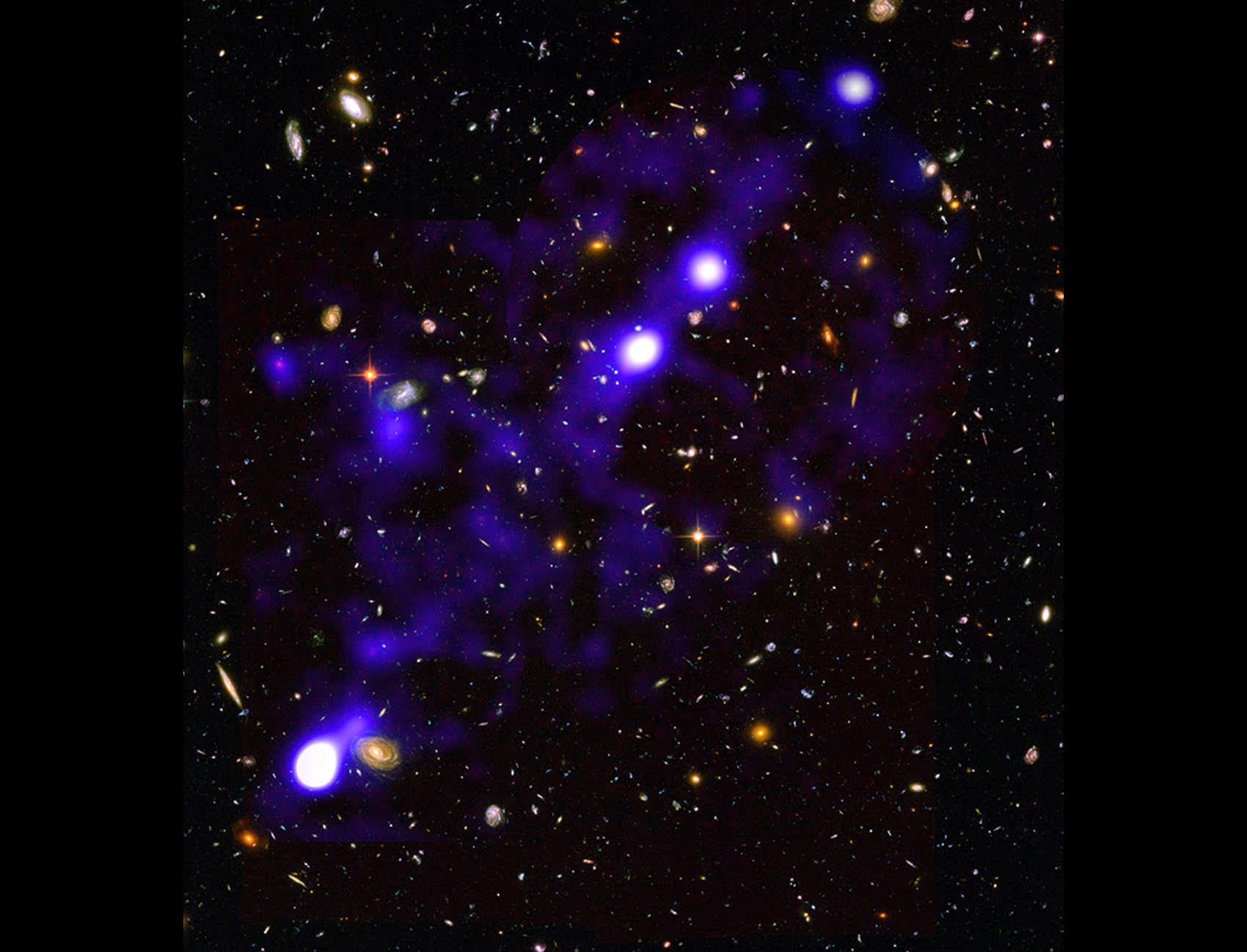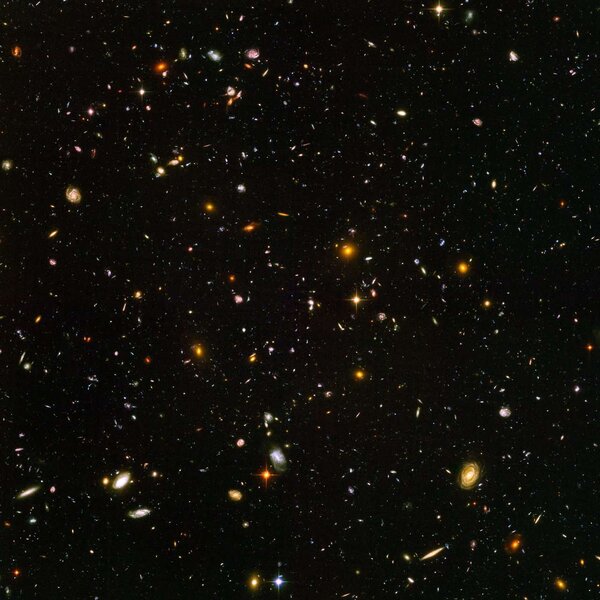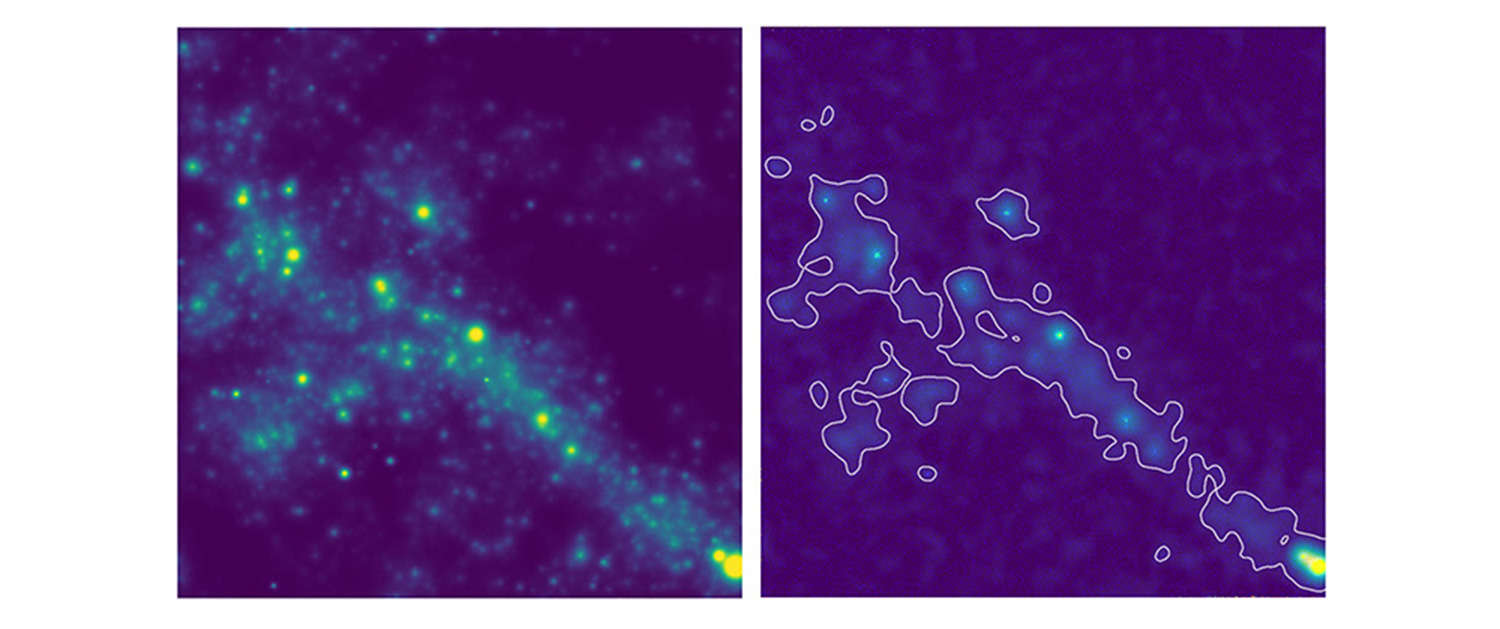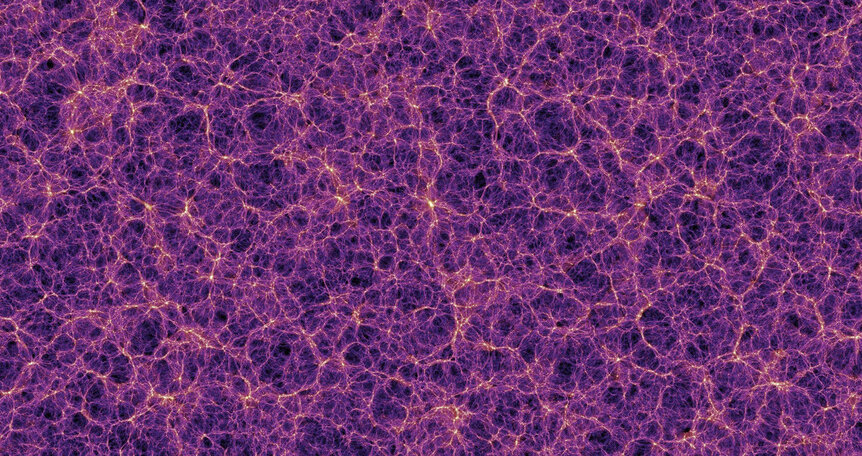Create a free profile to get unlimited access to exclusive videos, sweepstakes, and more!
The best image ever taken of the cosmic web reveals the birthplace of galaxies

For the first time, astronomers have obtained large-scale images of the cosmic web — the incredibly ancient scaffolding of dark matter and hydrogen gas out of which galaxies in the Universe were formed.
This material is so far away and so incredibly faint that it took one of the largest telescopes in the world coupled with one of the most powerful cameras to see it at all. But what they found in their images was the very framework of the Universe.
The Universe formed about 13.8 billion years in a sudden and colossal burst of expanding space and energy. In many ways it was like an explosion, though an explosion of space, not in space: It was the creation of space itself. It was crammed full of energy and matter, and the distribution wasn't smooth. Some places had a teeny bit more matter in them than others. These over- and under-dense regions were incredibly small; a typical denser spot might be 1 part in 100,000 more dense than its neighbor. But that was enough to create all the structure we see in the Universe today.
These overdense regions had enough gravity to overcome the expansion of the Universe, and began to collapse. Dark matter — a still mysterious substance that doesn't react with or emit light, but has mass and gravity — attracted material around it, and started forming long, thin, interconnecting filaments of material, like a web. "Normal" matter, the stuff we're made of, was pulled toward these filaments, and collected on them. Matter flowed along the filaments due to gravity, piling up and forming galaxies, clusters of galaxies, and even immense superclusters, clusters of galaxy clusters, the largest scale structures in the known Universe.
All these from tiny fluctuations in the fabric of space!
The problem is seeing this original structure, the original filaments that formed the cosmic web. They'd be loaded with hydrogen gas and glowing, but this all happened so long ago that it has taken over 13 billion years for the light from them to reach us. They're faint. There's been some success in detecting them, though.
Quasars, intensely bright galaxies blasting out radiation as their central supermassive black holes gobble down matter, can be used to find them, for example. As the quasar light passes through that primordial hydrogen gas, some of the light is absorbed in characteristics ways, and we can see that absorption in the quasar light. But that only shows you where that gas is in an extremely narrow spot on the sky, and even if you do this with hundreds of quasars the map you get is literally spotty.
Some of that gas has also been seen glowing (what we say is in emission), but only near where bright galaxies are lighting it up. Again, it's a very localized detection in a special location. What astronomers needed was a map of this material in typical spots in the Universe, representative of the cosmos as a whole.
And that's what they now have. A few years ago astronomers used the massive 8.2-meter Very Large Telescope (VLT) with the MUSE camera to look at the same spot in the sky Hubble observed to create the the Ultra-Deep Field, an area of the sky about the same size as a grain of sand held at arm's length… but in which Hubble saw over 10,000 galaxies.
When they observed this field with VLT/MUSE they saw lots of hydrogen gas, so they were encouraged to take deeper observations. Much deeper: Over the course of 8 months they took a staggering 140 hours of usable images on that single spot on the sky. And these weren't just images, either. They took spectra, breaking the light up into individual colors. Hot hydrogen gas in the early Universe glows at a characteristic color in the ultraviolet called Lyman-α (Lyman-alpha, or LyA for short). By the time this light reaches us billion of years later it's redshifted to the near-infrared. By looking at the exact wavelength observed, the redshift and therefore the distance to that LyA gas can be determined.
And what they found were long filaments of glowing hydrogen gas, some of it over 13 billion light years away, structures forming when the cosmos was less than a billion years old!
They actually found clumps and filaments from 11.5 to 13+ billion light years away from Earth, some of them well over 10 million light years long and only a few hundred thousand light years wide. They found over 1,250 individual spots where LyA was emitted, some of which were grouped into 22 large overdense regions of LyA emission which had between 10 and 26 distinct clumps in them. Those clumps represent galaxies and clusters in the very earliest stages of forming, not long after the formation of the Universe itself.
It gets better. They also found lots of fuzzy LyA emission well outside those clumps, what's called extended emission. Simulations of the way matter clumped together in the very early days of the Universe indicate this extended emission is caused by the birth of billions of dwarf galaxies, ones much smaller than our own Milky Way. These are called ultra-low luminosity emitters because they're extremely faint, some only a few thousand times the brightness of our Sun. Given that the Milky Way is many billions of times more luminous than the Sun you can appreciate how faint these dwarf galaxies are, and how many of them there must be to light up that diffuse gas.
These galaxies are extremely young; we see the light from them when they were less than 300 million years old. Again, for comparison, the Milky Way is over 12 billion years old, so we are seeing a slice of the Universe when it was practically an infant.
On top of all this they found that of all their sources in the VLT/MUSE data, 30% were not seen in the Hubble Ultra Deep Field, meaning these are even fainter objects than Hubble could spot. That's not hugely surprising, since VLT is far larger than Hubble and can collect more light. But it's still quite the achievement.
As an astronomer I'm amazed that all of this was even possible to do, let alone find that it matches simulations of the way we think the early Universe would behave. That's a critical point: Using just math, physics, and observations of the sky, we've been able to predict what the Universe was like when it was very young... and find that we're right!
I hear people denigrating science all the time, poo-pooing results as mere guesses. But it is in fact and in truth the best method we have to understand objective reality, that which exists outside of us. It is a phenomenally successful method, and these new observations are more evidence of that
You may deny science if you like, but you're going up against the Universe itself. You might want to think carefully on that position.

















